
Blackface is a form of theatrical makeup used predominantly by non-Black people to portray a caricature of a Black person.
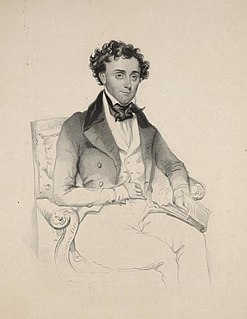
Thomas Dartmouth Rice was an American performer and playwright who performed in blackface and used African American vernacular speech, song and dance to become one of the most popular minstrel show entertainers of his time. He is considered the "father of American minstrelsy". His act drew on aspects of African American culture and popularized them with a national, and later international, audience.

A comedian or comic is a person who seeks to entertain an audience by making them laugh. This might be through jokes or amusing situations, or acting foolish, or employing prop comedy. A comedian who addresses an audience directly is called a stand-up comedian.
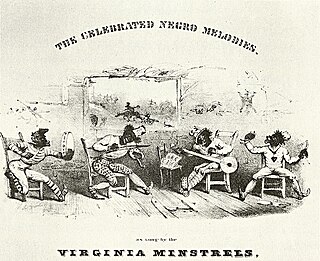
The minstrel show, also called minstrelsy, was an American form of racist theatrical entertainment developed in the early 19th century. Each show consisted of comic skits, variety acts, dancing, and music performances that depicted people specifically of African descent. The shows were performed by mostly white people wearing blackface make-up for the purpose of playing the role of black people. There were also some African-American performers and black-only minstrel groups that formed and toured. Minstrel shows caricatured black people as dim-witted, lazy, buffoonish, superstitious, and happy-go-lucky.

Alvin Ailey Jr. was an American dancer, director, choreographer, and activist who founded the Alvin Ailey American Dance Theater (AAADT). He created AAADT and its affiliated Alvin Ailey American Dance Center as havens for nurturing Black artists and expressing the universality of the African-American experience through dance.

Master Juba was an African-American dancer active in the 1840s. He was one of the first black performers in the United States to play onstage for white audiences and the only one of the era to tour with a white minstrel group. His real name was believed to be William Henry Lane, and he was also known as "Boz's Juba" following Dickens's graphic description of him in American Notes.

The Virginia Minstrels or Virginia Serenaders was a group of 19th-century American entertainers who helped invent the entertainment form known as the minstrel show. Led by Dan Emmett, the original lineup consisted of Emmett, Billy Whitlock, Dick Pelham, and Frank Brower.
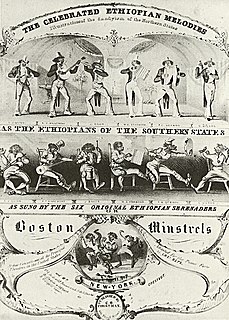
The Ethiopian Serenaders was an American blackface minstrel troupe successful in the 1840s and 1850s. Through various line-ups they were managed and directed by James A. Dumbolton (c.1808–?), and are sometimes mentioned as the Boston Minstrels, Dumbolton Company or Dumbolton's Serenaders.
Sam Hague was a British blackface minstrel dancer and troupe owner. He was a pioneering white owner of a minstrel troupe composed of black members, and the success he saw with this troupe inspired many other white minstrel managers to tour with black companies.
Bryant's Minstrels was a blackface minstrel troupe that performed in the mid-19th century, primarily in New York City. The troupe was led by the O'Neill brothers from upstate New York, who took the stage name Bryant.

Mechanics' Hall was a meeting hall and theatre seating 2,500 people located at 472 Broadway in New York City, United States. It had a brown façade. Built by the Mechanics' Society for their monthly meetings in 1847, it was also used for banquets, luncheons, and speeches held by other groups.
Robey Theatre Company is a Los Angeles-based non-profit theatre company.
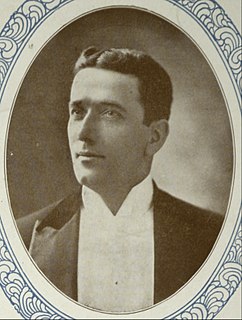
Barney Fagan was an American performer, director, choreographer, and composer.
The Dance: The History of American Minstrelsy is an American stage play written by Jason Christophe White and co-directed by Aaron White, which opened in 2005 in the KAOS Cinefreestyle Theatre in Los Angeles. The play follows two characters as they relay the history of American Minstrelsy, as both main characters perform in blackface.
Jason Christophe White is an NAACP Theater Award-winning American playwright, his one produced play being The Dance: The History of American Minstrelsy, which he co-wrote and co-directed with Aaron White. Jason White is also the co-owner of In Tha Cut Productions.
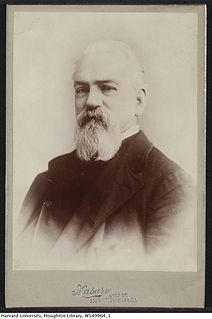
John Hodges ; known as Cool White, was an American blackface minstrel entertainer, who wrote or popularized the song "Buffalo Gals", published by him in 1844 under the title "Lubly Fan". There is some dispute as to whether he composed the tune or adapted a traditional air.

Charles T. "Charlie" or "Charley" White (1821–1891), was an early blackface minstrel entertainer.
Sanding, also known as sand jigging or sand dancing, is a type of dance performed as a series of slides and shuffles on a sand-strewn floor. In some instances, the sand is spread across an entire stage. In other cases, it is kept in a box that the dancer stays in throughout the dance. Originally a soft-shoe technique, scratching in sand can also add a different texture to the percussion of tap. There is no one type of shoe used to sand dance; traditional tap shoes are used alongside soft shoes and leather boots, all creating a distinctive sound. Willie "The Lion" Smith said of sanding, "You could really hear and feel the rhythm when the dancers shuffled around in a nice pair of patent-leather shoes".
Dominique Morisseau is an American playwright and actress from Detroit, Michigan. She has authored over nine plays, three of which are part of a cycle titled The Detroit Project. She was a recipient of the MacArthur Fellowship for 2018.










